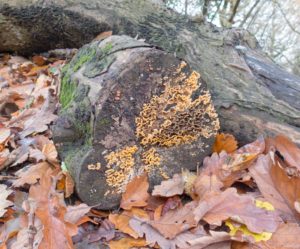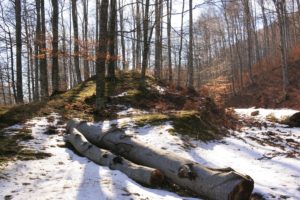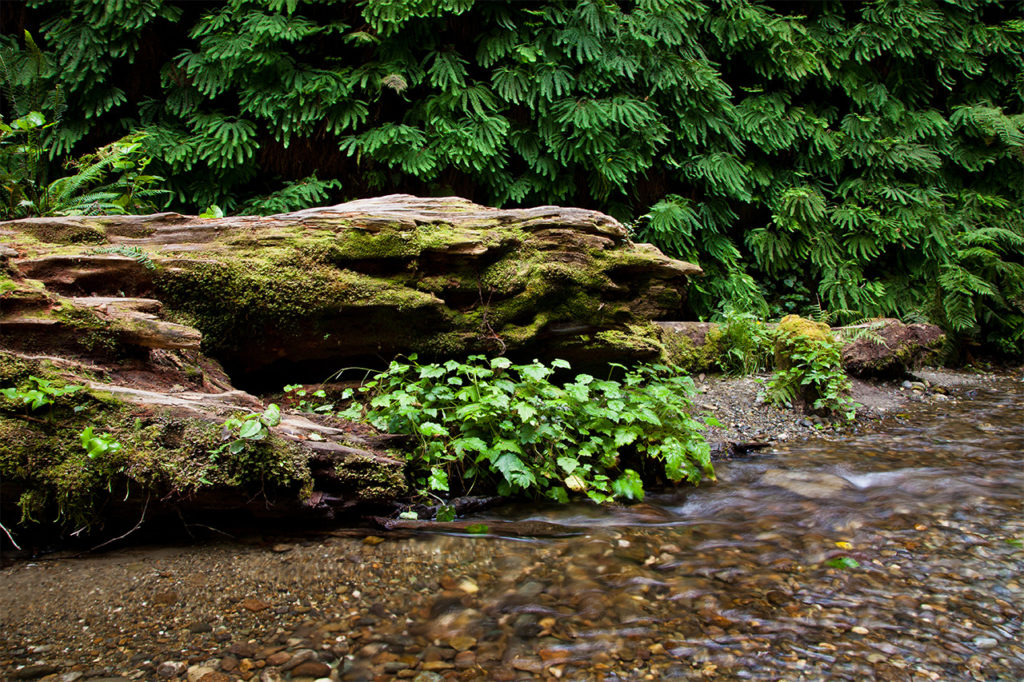Value Of Downed Wood to Ecosytems
Downed wood and wildlife associated with them play important ecological roles. Some organisms disperse fungi and lichens. Insectivores drawn to downed wood help to keep pests in check, while species that aerate, dig and fragment wood likely contribute more to soil structure and quality.
Downed logs reduce erosion. When they retain litter fall they also reduce nutrient loss, and by anchoring snow packs they retain moisture and reduce runoff.
In some locations decomposing downed wood can be a superior nursery for many seeds, particularly of shade seeking plants. It is likely more moist and nutritionally rich and made more so by the presence of dead leaf litter. Decaying wood, whether standing or downed, can be compared to a warehouse for nutrients and organic matter. The amount of this matter naturally varies by region, habitat and specific location; and of course, is subject to the policies of land managers.
When associated with streams and riparian areas, woody elements can be highly beneficial. To varying degrees they affect nutrient and water flow dynamics in streams, reduce erosion, provide substrates to support biological activity, and may trap carcasses for foraging terrestrial scavengers. Downed trees in water serve as resting and feeding perches as well as corridors for wildlife.
When dead trees are allowed to decay in place their nutritional offerings ultimately enter a subterranean world where they are further broken down and transported to different levels of soil by various decomposers. Among them are bacteria and such things as nematodes and earthworms. But among those decomposers are types of fungi, called mycorrhizal. Think of a spiderweb made up of strands ten times finer than a root hair. When plant roots send chemical “green lights” to the fungal web, it responds by delivering minerals such as phosphorus and inorganic nitrogen to the plant via its rootlets. In some cases, the fungi may include a bonus in the form of special resistance to certain diseases. In exchange, the fungi receives moisture and carbohydrates from the plant. In the community of a dying tree, reciprocation abounds!
Open the link below to read a charming and beautifully illustrated article by Nancy Lawson who provides an intriguing window into the value of decaying plant material in your back yard : http://www.humanegardener.com/?p=1764







Connect
Connect with us on the following social media platforms.